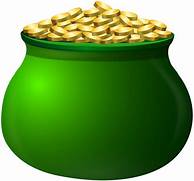Celebrating Irish Heritage
It's Your Lucky Day!
Learn All About St. Patrick's Day:
History, Facts, Trivia, and Banning Beer?!
When St. Patrick’s Day approaches each year, one might start thinking about which nearby bars are serving green beer, which parades are happening close by to take the family to, and/or what you have in your closet that will help ensure you don’t get pinched by any oh-so-funny friends of yours throughout the day. But many of us are less likely to consider the origin of the holiday and why we celebrate it to begin with. Many of us, in fact, might not have a clue about St. Patrick’s Day history, and may feel surprised by some of its backstory (like how for many years, Irish bars were actually banned from being open on this day!). Fortunately, we have all the St. Patrick’s Day history, facts and trivia that you need to know!
So, if you’re left scratching your head, wondering who St. Patrick was, or if you’re feeling curious about when exactly this holiday started being observed, you’re not alone. We’ll even share how St. Patrick’s Day went from being a serious, religious observance, to the infamous drinking event that it is today. We’ve got all the answers to fill you in!
When is St. Patrick’s Day?
This year, St. Patrick’s Day falls on Sunday, March 17, 2024.
St. Patrick’s Day History:
St. Patrick’s Day celebrates the life of Saint Patrick—the patron saint of Ireland. This influential missionary has been credited with bringing Christianity to Ireland. St. Patrick’s Day takes place on March 17 each year because St. Patrick’s death is believed to have been on March 17, 461.
The Church began observing a special feast to honor him on this day starting in 1631.
15 Saint Patrick’s Day Facts
1. Saint Patrick’s Day always falls on March 17th.
2. The first Saint Patrick’s Day parade took place in America—not in Ireland.
3. The New York City Saint Patrick’s Day parade is the world’s oldest civilian parade and the largest in the United States.
4. Chicago began its annual tradition of turning the Chicago River green on Saint Patrick’s Day in 1962.
5. In Ireland, Saint Patrick’s Day had been viewed mostly as a religious observance, and up until the 1960s, they even had laws that forbid bars from being open that day.
6. It wasn’t until 1798 (the year of the Irish Rebellion) that the color green became officially
associated with Saint Patrick’s Day. Before then, another color was originally associated with Saint Patrick (see the trivia below!).
7. Saint Patrick’s Day switched from a strictly holy day for Catholics to an official Irish public holiday in 1903.
8. Although Saint Patrick’s Day falls within the period of Lent—a time when the Catholic Church prohibits eating meat, the ban is lifted on this specific day of celebration.
9. The annual shamrock ceremony in the White House started in 1952.
10. Each year, 5.5 million people visit New York’s Saint Patrick’s Cathedral.
11. Before Saint Patrick became a missionary; he was kidnapped at the age of 16 and taken to Ireland as a slave.
Related: History Facts
12. Saint Patrick is said to have been buried in the town of Downpatrick, County Down, in Northern Ireland.
13. There are two autobiographical writings from Saint Patrick himself, including Confessio and Letter to Coroticus.
14. Traditionally, Catholic families go to church in the morning on Saint Patrick’s Day and partake in a meal that includes cabbage and Irish bacon.
15. Dublin’s first official celebration of Saint Patrick’s Day did not occur until 1931.



















